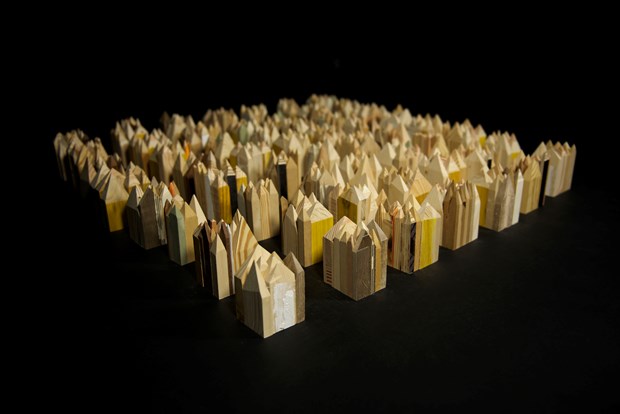Come with me now as I wear my geographical lenses, looking at the life and work of Annie Nelson – ‘a Leeds based artist working across multiple platforms. She has a continued interest in relationships; between people and their surroundings’ (Axisweb). I am going to look at two particular case studies within her work which are fundamentally geographical.
artistYoke’s Travels!
‘artistYoke’ is a collaboration between Annie Nelson and Chris Woodward (artistYoke, 2015), two artists who were based in Leeds for eight years. One of the exciting things they have been doing is ‘an exploratory research and production trip across Europe in a self-converted campervan … Taking to the road to research how art is cultivated, presented, how artists exist, and how nomadic cultures impact on todays society.’

Their aim is ‘to explore how artists are making an impact across Europe and use this experience to develop a new body of collaborative work.’ (artistYoke, 2015) This is very interesting, geographically, as there are distinct notions of difference running through this thought-process. There is a will to see what happens out there, in another space; it’s about wanting to explore the ‘Other’, to explore how things can be done differently. And this relies on ‘situated knowledge’ (Haraway, 1991, cited in Rose, 1997) – an understanding of the way you see the world – as exploring starts from a point of knowing what you don’t know! Running parallel to this is the notion of spatial boundary; by travelling to Europe, by crossing borders, there is a perception that something will change; that they will learn something new. This is deeply geographical, as it alludes to imaginative geographies which ‘sustain images of ‘home’ as well as ‘abroad” (Said, 1978, cited in Gregory et al., 2009: 370). Nelson and Woodward are relying on imaginative geographies to inspire their exploration.
No Sleeping
Nelson, along with Chris Woodward, has spent time ‘looking at the idea of boundaries and the physical way people are contained, protected and prohibited from moving. How the idea of physical and psychological boundaries can inhibit progress and create tensions between cultural groups both settled and nomadic.’ She goes on to write that ‘these works in wood’ (pictured) are ‘designed to have varied assembly.’ (Axisweb)

In a paradoxical move, Nelson and Woodward have been inspired to create something – to open up ideas – based on containment and boundaries. The fact that these wooden objects are ‘designed to have varied assembly’ points to spatial defiance – these creations, based on spatial containment, are meant to be moved around and this keys into creative place-making, something which ‘strategically shape(s) the physical and social character of a neighborhood, town, city, or region around arts and cultural activities’ and aims to ‘inspire’ people (Markusen & Gadwa, 2010: 3). Here, the user is encouraged to place-make, perhaps helping them to re-imagine spatial possibilities, using the springboard of spatial containment.
I wonder where the artistYoke van is now!
References
artistYoke (2015) Welcome to artistYoke, accessed by me on 18 March 2016, <http://us11.campaign-archive2.com/?u=7b5e9d9cebc0c3a5726bede6a&id=b0fda3212d>
Axisweb, Annie Nelson, accessed by me on 18 March 2016, <http://www.axisweb.org/p/annienelson/#cv>
Axisweb, No Sleeping, accessed by me on 18 March 2016, <http://www.axisweb.org/p/annienelson/workset/216847-no-sleeping/>
Gregory, D., Johnston, R., Pratt, G., Watts, M., & Whatmore, S. (Eds.). (2009). The dictionary of human geography. Wiley Blackwell.
Markusen, A., & Gadwa, A. (2010). Creative placemaking. Washington, DC: National Endowment for the Arts.
Rose, G. (1997). Situating knowledges: positionality, reflexivities and other tactics. Progress in human geography, 21(3), 305-320.
